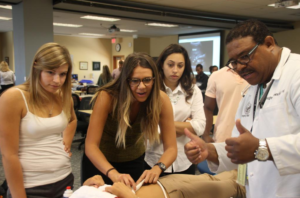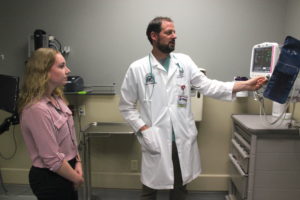By: Alessandra Santiago
In an earlier article of the Ready, Set, Apply series, we introduced how the secondary applications work. Typically, these are a set of essays that pre-med students receive after submitting their primary applications, waiting 4-6 weeks for administrative review by AMCAS, and passing the minimum GPA and MCAT requirements of the medical schools to which they have applied. For a student that applies to 30 schools, that can mean up to 30 secondary applications. At over 2-9 essays per secondary application, this can lead to a potentially staggering 270 prompts. How do you prepare to handle the flood of incoming essays?

For starters, taking the 4-6 week administrative review period between the primary application submission and secondary application reception to compose answers to traditional secondary prompts is a good use of time. Expect to answer a few common questions that get at your motivation to become a physician and why each medical school to which you have applied can help you obtain your goals. With each prompt set between 2000-4000 characters, it is a good idea to compose a master document where you list your reasons for pursuing medicine as well as brainstorming why those reasons align with unique opportunities at each medical school.
Even with the huge number of prompts, there is a fair amount of overlap between the prompts sent out by each school, though they may need some tweaking to specify your answers to each school. Most medical schools will send out a combination of different types of prompts, but most of them are aimed at elucidating aspects of your experiences, goals, and identity that would make you a good fit for their school. Consider the following prompts as guideposts for your brainstorming process:
- Why do you want to attend this medical school?
- Describe a humbling or ethically challenging experience. What did you learn from it? How did you address it?
- Summarize what you did after you graduated from your undergraduate program.
- What diverse or unique element do you bring to our school?
- Do you feel that your academic record is a reflection of your abilities?
- If there was an identifiable person that influenced your career choice, who was it? How did they influence you?
- After receiving licensure, what are your goals as a physician?
- What are your interests outside of the field of medicine?
- From your primary application, please select and describe the activity that has directly influenced your decision to become a physician.

For the prompts asking about why you have chosen this particular school, make sure you have completed effective research on your list: what programs at each school make them stand out for you? How do they fit your personal goals? What about the school’s mission statement appeals to you? Make sure you answer each of these prompts with that specific school in mind.
Other prompts try to elucidate what you will uniquely offer to each school. This is where you can tie back to the theme of your primary application and Personal Statement, in addition to the mission of the school itself. If you have provided a specific description of your character as an applicant in your Personal Statement, use that description to highlight qualifications unique to you, and only you. This can help you answer what you bring that other applicants don’t.

Be honest, humble, and accurate when answering “personal challenges” prompts. You should not exaggerate the adversity you have experienced in your life, nor should you downplay what experiences you have overcome on your road to medical school. You want to highlight the types of challenges that have propelled you forward during your clinical experiences, your school work as a team leader, or your extracurricular activities. Above all else, focus on what you — and only you — bring to this school. Only you know your story. Tell it fully.
Finally, we have already addressed your strategies for which secondaries to get out first, but here is a quick reminder: be sure to submit within two weeks of receiving your secondaries, and focus on the schools you are most likely to attend. Don’t overload your efforts to submit secondaries for your reach schools at the expense of schools to which you may be more likely to be admitted. Avoid repeating experiences found elsewhere in your application materials, but do take the time to highlight important facets of your application that have not appeared elsewhere, like your cultural/familial background that drove you to medicine. With a methodical approach to preparing and editing your secondaries, your secondaries lay the foundations for a successful med school interview, which we will cover in the next article.
| Assignment #18: Start brainstorming answers to the bullet point prompts above. Do your research on your school list to identify key programs, courses, faculty, and missions of each school to provide answers for school-specific questions. Understand your ‘character’, e.g. who you are as a unique candidate. |
If you want to learn more about navigating the Pre-Med journey, check out our Getting Into Med School: Tips and Tricks Blog.
